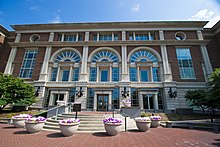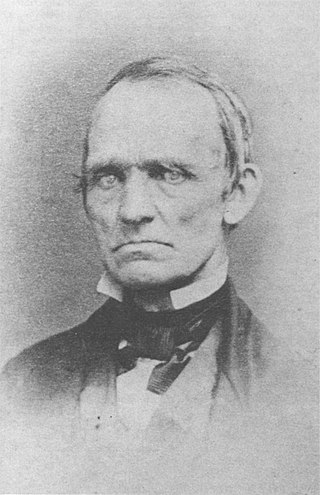
Samuel Merrill, a native of Peacham, Vermont, was an early lawyer and leading citizen of Indiana, who served as state treasurer from 1822 to 1834. Merrill attended Dartmouth College, and in 1816 settled in Vevay, Indiana, where he established a law practice and served in the Indiana General Assembly as a representative from Switzerland County (1821–22). Merrill resigned his position as state treasurer in 1834 to become the president of the State Bank of Indiana (1834–44); he also served as the president of the Madison and Indianapolis Railroad Company (1844–48) and head of the Merrill Publishing Company, which later became the Bobbs-Merrill Company. In addition to his government service and business ventures, Merrill was the second president of the Indiana Historical Society (1835–48), a founder and trustee of Wabash College, and an elder in the Second Presbyterian and Fourth Presbyterian churches in Indianapolis.

Eli Lilly was an American soldier, pharmacist, chemist, and businessman who founded the Eli Lilly and Company pharmaceutical corporation. Lilly enlisted in the Union Army during the American Civil War and recruited a company of men to serve with him in the 18th Independent Battery Indiana Light Artillery. He was later promoted to major and then colonel, and was given command of the 9th Regiment Indiana Cavalry. Lilly was captured in September 1864 and held as a prisoner of war until January 1865. After the war, he attempted to run a plantation in Mississippi, but it failed and he returned to his pharmacy profession after the death of his first wife.
Lilly Endowment Inc., headquartered in Indianapolis, Indiana, is one of the world's largest private philanthropic foundations and among the largest endowments in the United States. It was founded in 1937 by Josiah K. Lilly Sr. and his sons, Eli Jr. and Josiah Jr. (Joe), with an initial gift of Eli Lilly and Company stock valued at $280,000 USD. As of 2020, its total assets were worth $21 billion.
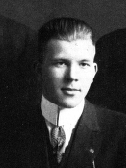
Josiah Kirby "Joe" Lilly Jr. was a businessman and industrialist who served as president and chairman of the board (1953–66) of Eli Lilly and Company, the pharmaceutical firm his grandfather, Colonel Eli Lilly, founded in Indianapolis in 1876. Lilly, the younger son and namesake of Josiah K. Lilly Sr., graduated from the University of Michigan's School of Pharmacy in 1914 where he was a member of the Chi Psi Fraternity. He served in the U.S. Army in France during World War I. At Eli Lilly and Company, where his primary focus was marketing and human resources, he served as vice president of marketing, executive vice president of the company, and president of Eli Lilly International Corporation, before succeeded his older brother, Eli Jr., as company president in 1948 and as chairman of the board in 1953.
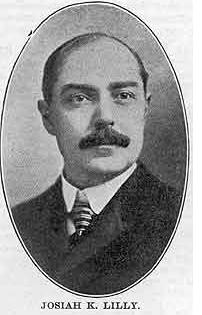
Josiah Kirby Lilly Sr., nicknamed "J. K.," was an American businessman, pharmaceutical industrialist, and philanthropist who became president and chairman of the board of Eli Lilly and Company, the pharmaceutical firm his father, Colonel Eli Lilly, founded in 1876. Josiah, the colonel's sole heir, began working at his father’s company at the age of fourteen. He graduated from the Philadelphia College of Pharmacy and Science and became superintendent of the Lilly laboratories in 1882 and company president in 1898. Under his leadership, the company introduced standardized manufacturing processes, expanded its sales force, and increased its research efforts to develop new drugs. Eli Lilly and Company grew into one of the largest and most influential pharmaceutical corporations in the world, and the largest corporation in Indiana. Lilly’s eldest son, Eli Jr., succeeded him as president in 1932. His younger son, Josiah Jr. ("Joe"), succeeded Eli as company president in 1948. J. K. served as chairman of the board from 1932 until his death in 1948.

The Indiana State Museum is a museum located in downtown Indianapolis, Indiana, United States. The museum houses exhibits on the science, art, culture, and history of Indiana from prehistoric times to the present day.

The history of Indianapolis spans three centuries. Founded in 1820, the area where the city now stands was originally home to the Lenape. In 1821, a small settlement on the west fork of the White River at the mouth of Fall Creek became the county seat of Marion County, and the state capital of Indiana, effective January 1, 1825. Initially the availability of federal lands for purchase in central Indiana made it attractive to the new settlement; the first European Americans to permanently settle in the area arrived around 1819 or early 1820. In its early years, most of the new arrivals to Indianapolis were Europeans and Americans with European ancestry, but later the city attracted other ethnic groups. The city's growth was encouraged by its geographic location, 2 miles (3.2 km) northwest of the state's geographic center. In addition to its designation as a seat of government, Indianapolis's flat, fertile soil, and central location within Indiana and the Midwest, helped it become an early agricultural center. Its proximity to the White River, which provided power for the town's early mills in the 1820s and 1830s, and the arrival of the railroads, beginning in 1847, established Indianapolis as a manufacturing hub and a transportation center for freight and passenger service. An expanding network of roads, beginning with the early National Road and the Michigan Road, among other routes, connected Indianapolis to other major cities.
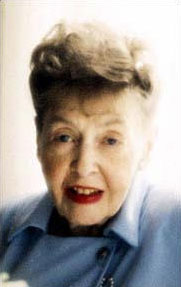
Ruth Lilly was an American philanthropist, the last surviving great-grandchild of Eli Lilly, founder of the Eli Lilly and Company pharmaceutical firm, and heir to the Lilly family fortune. A lifelong resident of Indianapolis, Indiana, Ruth Lilly is estimated to have given away nearly $800 million of her inheritance during her lifetime, mostly in support of the arts, education, health, and environmental causes in Indianapolis and in Indiana.

Indiana, a state in the Midwest, played an important role in supporting the Union during the American Civil War. Despite anti-war activity within the state, and southern Indiana's ancestral ties to the South, Indiana was a strong supporter of the Union. Indiana contributed approximately 210,000 Union soldiers, sailors, and marines. Indiana's soldiers served in 308 military engagements during the war; the majority of them in the western theater, between the Mississippi River and the Appalachian Mountains. Indiana's war-related deaths reached 25,028. Its state government provided funds to purchase equipment, food, and supplies for troops in the field. Indiana, an agriculturally rich state containing the fifth-highest population in the Union, was critical to the North's success due to its geographical location, large population, and agricultural production. Indiana residents, also known as Hoosiers, supplied the Union with manpower for the war effort, a railroad network and access to the Ohio River and the Great Lakes, and agricultural products such as grain and livestock. The state experienced two minor raids by Confederate forces, and one major raid in 1863, which caused a brief panic in southern portions of the state and its capital city, Indianapolis.

Jacob Piatt Dunn Jr. was an American historian, journalist, and author. A political writer and reformer, Dunn worked on ballot reform issues based on the Australian ballot system, authored a new Indianapolis city charter, and served as adviser to Indiana governor Thomas R. Marshall and U.S. Senator Samuel M. Ralston.
During the American Civil War, Indianapolis, the state capital of Indiana, was a major base of supplies for the Union. Governor Oliver P. Morton, a major supporter of President Abraham Lincoln, quickly made Indianapolis a gathering place to organize and train troops for the Union army. The city became a major railroad hub for troop transport to Confederate lands, and therefore had military importance. Twenty-four military camps were established in the vicinity of Indianapolis. Camp Morton, the initial mustering ground to organize and train the state's Union volunteers in 1861, was designated as a major prisoner-of-war camp for captured Confederate soldiers in 1862. In addition to military camps, a state-owned arsenal was established in the city in 1861, and a federal arsenal in 1862. A Soldiers' Home and a Ladies' Home were established in Indianapolis to house and feed Union soldiers and their families as they passed through the city. Indianapolis residents also supported the Union cause by providing soldiers with food, clothing, equipment, and supplies, despite rising prices and wartime hardships, such as food and clothing shortages. Local doctors aided the sick, some area women provided nursing care, and Indianapolis City Hospital tended to wounded soldiers. Indianapolis sent an estimated 4,000 men into military service; an estimated 700 died during the war. Indianapolis's Crown Hill National Cemetery was established as one of two national military cemeteries established in Indiana in 1866.

The Golden Age of Indiana Literature is a period from 1880 to 1920 when many nationally and internationally acclaimed literary works were created by natives of the state of Indiana. During this time, many of the United States' most popular authors came from Indiana. Maurice Thompson, George Ade, Booth Tarkington, Theodore Dreiser, Edward Eggleston, Frank McKinney Hubbard, George Barr McCutcheon, Meredith Nicholson, Gene Stratton Porter, Lew Wallace, and James Whitcomb Riley were foremost among the Hoosier authors.
The following is a timeline of the history of the city of Indianapolis, Indiana, United States.
Harvey N. Middleton was an American physician and cardiologist in Indianapolis, Indiana, who is best known for his efforts to open opportunities for black physicians to serve on the staffs of Indianapolis hospitals and for his community service. Middleton was born in Denmark, South Carolina, and received a Bachelor of Arts degree from Benedict College (1919) in Columbia, South Carolina. He attended two years of medical school at Boston University before transferring to Meharry Medical College, in Nashville, Tennessee, where he received a medical degree (M.D.) in 1926. Middleton took short courses for additional training at Harvard University; the University of London, England; the University of Michigan; Indiana University; and Michael Reese Hospital in Chicago. In 1928 Middleton moved to Anderson, Indiana, where he joined the staff of Saint Johns Hospital. Around 1935 he relocated to Indianapolis, established a private medical practice, and volunteered at Indianapolis General (City) Hospital's outpatient heart clinic. Middleton was accepted as a member of City Hospital staff in 1942 and joined the staffs at other Indianapolis hospitals. Middleton wrote several articles relating to cardiology that appear in state and national medical journals. He was a member of the American Medical Association, the National Medical Association, the American Heart Association, the Indiana State Medical Association, the Hoosier State Medical Society, and others.
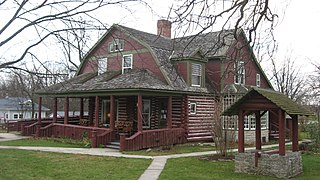
Gene Stratton-Porter Cabin, , known as the Limberlost Cabin and the Limberlost State Historic Site, was the former home of Gene Stratton Porter, a noted Indiana author who lived in the home from 1895 to 1913. The two-story, fourteen-room log cabin is located near the Limberlost Swamp on the outskirts of Geneva in Adams County, Indiana. Stratton-Porter designed the Queen Anne-style rustic home with the help of an architect. It was listed on the National Register of Historic Places in 1974.

The Propylaeum, also known as the John W. Schmidt House or as the Schmidt-Schaf House, is a historic home and carriage house located at 1410 North Delaware Street in Indianapolis, Marion County, Indiana. The Propylaeum was named after the Greek word "propýlaion," meaning "gateway to higher culture." The property became the headquarters for the Indianapolis Woman's Club in 1923, as well as the host for several other social and cultural organizations. It was initially built in 1890-1891 as a private residence for John William Schmidt, president of the Indianapolis Brewing Company, and his family. Joseph C. Schaf, president of the American Brewing Company of Indianapolis, and his family were subsequent owners of the home.
Gayle Thornbrough was born in Hendricks County, Indiana, and grew up in Indianapolis. She joined the Indiana Historical Society in 1937 and served as its director of publications and library, an editor of historical documents, and its first executive secretary until her retirement in 1984. In addition to her work at the IHS, Thornbrough was involved in historical editing projects for the Indiana Historical Bureau from 1947 to 1966 and spent twenty months in 1967–1968 as a manuscript specialist at the Library of Congress in Washington, D.C. Thornbrough is best known for her contributions to editing historical documents. She is named as the editor of nearly twenty publications, the most notable include The Old Northwest: Pioneer Period, 1815–1840, a Pulitzer Prize winner by R. Carlyle Buley; Journals of the General Assembly of Indiana Territory, 1805–1815; Indiana Election Returns, 1816–1851; three volumes in the governors of Indiana series ; and The Diary of Calvin Fletcher, among others. The Indiana Magazine of History's annual Thornbrough award and Indiana Association of Historians' annual fall lecture are named in honor of Thornbrough and her sister, Emma Lou.
The Woman's Improvement Club of Indianapolis, Indiana, was formed in 1903 by Lillian Thomas Fox, Beulah Wright Porter, and other prominent African American women as a small literary group to improve their education, but it was especially active and best known for its pioneering efforts to provide facilities to care for the city's African American tuberculosis patients from 1905 to the mid-1930s. The clubwomen also supported the war effort during World War I and provided social service assistance to Indianapolis's impoverished residents and its African American youth. By 1960, when tuberculosis was no longer a major health threat, the club continued its support of the local black community in other ways, such as a visiting nurse program and scholarships to students graduating from Crispus Attucks High School students. In the mid-1960s, after its membership significantly declined, its records were donated to the Indiana Historical Society.
William Fortune was a wealthy American businessman, journalist, and civic leader who was a prominent figure in the development of Indianapolis, Indiana, for more than five decades. Fortune is best known for his support of paved city and state roads as part of the Good Roads Movement and leading a thirty-year effort to elevate railroad tracks in Indianapolis, in addition to leadership in several civic organizations. In 1890 he helped establish the Commercial Club, the forerunner to the Indianapolis Chamber of Commerce; in 1916 he was a founder of the Indianapolis chapter of the American Red Cross; and in 1918 he led a local War Chest fundraising effort, which was a forerunner to the city's present-day United Way campaigns. In 1920 Fortune purchased the home where Hoosier poet James Whitcomb Riley once lived in Indianapolis in order to preserve it. Fortune retained the property, which is listed on the National Register of Historic Places, until the nonprofit James Whitcomb Riley Memorial Association was formed in 1922. Fortune also acquired and donated a 30-acre (12-hectare) site in Indianapolis in 1930 for a U.S. Veterans Health Administration hospital that was completed in 1931.
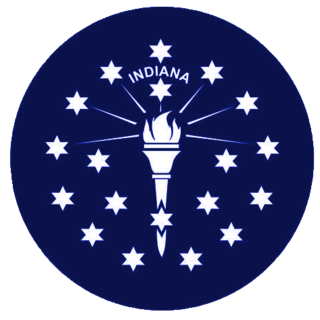
The Indiana Jewish Historical Society is a 501(c)3 not-for-profit educational organization with a stated goal to collect, preserve, publish, and share the Jewish experience in Indiana.

